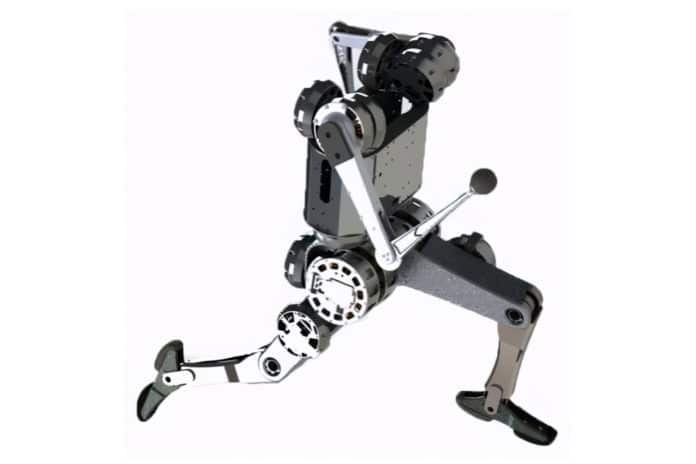Building humanoid robots that can perform acrobatic movements, such as flips and spinning jumps, is very challenging in practice. It requires systematic approaches across hardware design, motion planning, and control.
In new work, MIT‘s Biomimetic Robotics Lab researchers have presented a new humanoid robot design supported by an actuator-aware kino-dynamic motion planner and a landing controller as part of a practical system design for highly dynamic motion control of the humanoid robot. This design, presented in a paper recently posted to arXiv (to be presented at Humanoids 2020 in July), could allow the humanoid robot to perform backflips and other acrobatic movements.
Once the MIT humanoid exits the simulation, its appearance will correspond to an upright version of Mini Cheetah. The robot’s torso and arms are very similar to Mini Cheetah, but the leg design is completely new and features redesigned actuators with higher power and better torque density.
For this new leg design, the main focus is to enable smooth yet dynamic heel-to-toe movements that happen during human walking and running while maintaining low inertia for smooth interactions with ground contacts. MIT researchers hope to develop robust, low-inertia, and powerful legs that can mimic the actions of human legs.
“The design strategy matters because the field of humanoid robots is presently dominated by hydraulically actuated robots and robots with series elastic actuators,” Matt Chignoli, who worked on the design, told IEEE Spectrum. “As we continue to improve the performance of our proprioceptive actuator technology, as we have done for this work, we aim to demonstrate that our unique combination of high torque density, high bandwidth force control, and the ability to mitigate impacts is optimal for highly dynamic locomotion of any legged robot, including humanoids.”
MIT puts a lot of effort into accurately simulating this research. They particularly model the physical constraints highlighted by the robot when it performs dynamic movements. The design of the MIT humanoid robot is considered complete, and the plan is to build it for real over the summer. The researchers hope that the humanoid thus constructed will be able to do parkour on difficult terrain.
